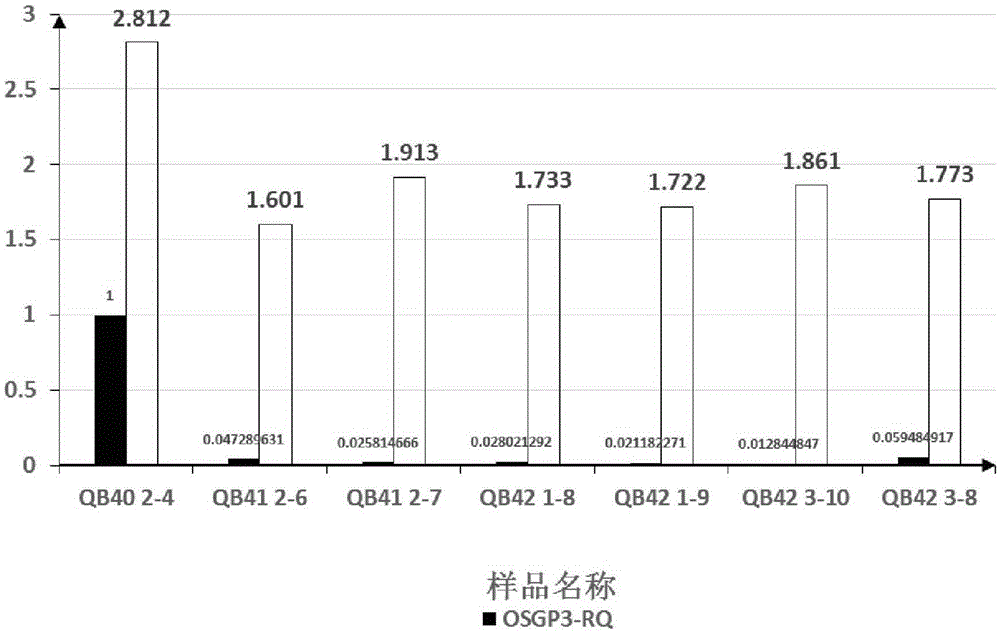Application of OsGP3 gene in improving photoinhibition resistance of rice
An anti-photoinhibition, genetic technology, applied in the fields of application, genetic engineering, plant genetic improvement, etc., can solve the problem that the target gene cannot be further translated
- Summary
- Abstract
- Description
- Claims
- Application Information
AI Technical Summary
Problems solved by technology
Method used
Image
Examples
Embodiment
[0012] 1. Acquisition of amplification template
[0013] Gene fragments were amplified from cDNA samples of Nipponbare materials for the construction of RNAi vectors. The experimental steps are as follows:
[0014] 1.1 Extraction of total RNA from rice tissue
[0015] ① Take Nipponbare leaf samples at the heading stage, put them into liquid nitrogen quick-freezing quickly, or store them at -80°C. Grind the tissue into powder in liquid nitrogen, add 0.1 g of the sample into a pre-cooled 1.5 mL centrifuge tube, and add 1 mL of TRIzol (Invitrogen), and mix quickly.
[0016] ②Let stand at room temperature for 5-10 minutes, add 200 μL phenol:chloroform:isoamyl alcohol (volume ratio 25:24:1) to each tube of 1 mL TRIzol, shake vigorously for 30 seconds, and let stand at room temperature (25°C) for 5 minutes.
[0017] ③Centrifuge at 12000rpm at 4°C for 10 minutes, the sample is separated into three layers, and the upper aqueous phase is RNA (about 60% of TRIzol). Carefully aspirat...
PUM
 Login to View More
Login to View More Abstract
Description
Claims
Application Information
 Login to View More
Login to View More - Generate Ideas
- Intellectual Property
- Life Sciences
- Materials
- Tech Scout
- Unparalleled Data Quality
- Higher Quality Content
- 60% Fewer Hallucinations
Browse by: Latest US Patents, China's latest patents, Technical Efficacy Thesaurus, Application Domain, Technology Topic, Popular Technical Reports.
© 2025 PatSnap. All rights reserved.Legal|Privacy policy|Modern Slavery Act Transparency Statement|Sitemap|About US| Contact US: help@patsnap.com



